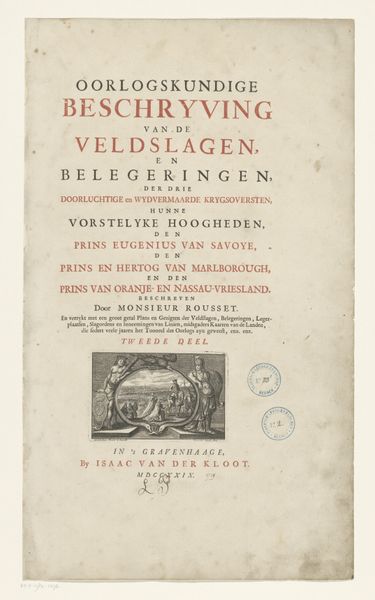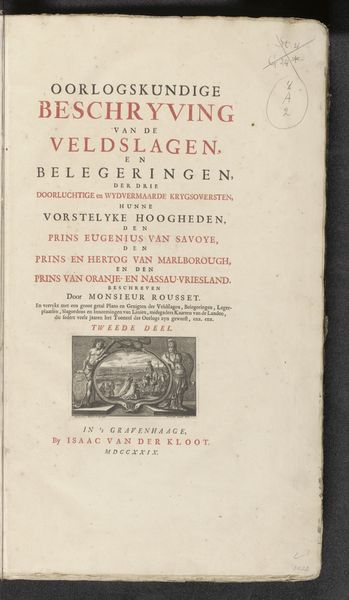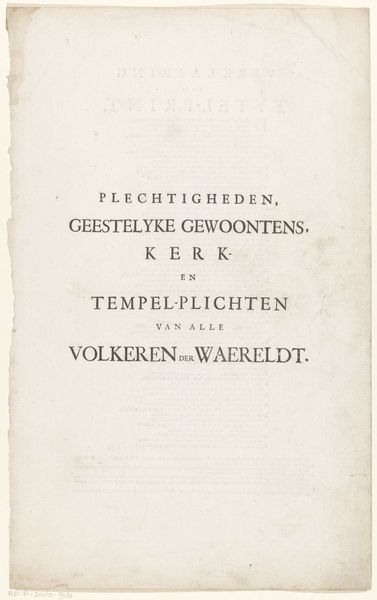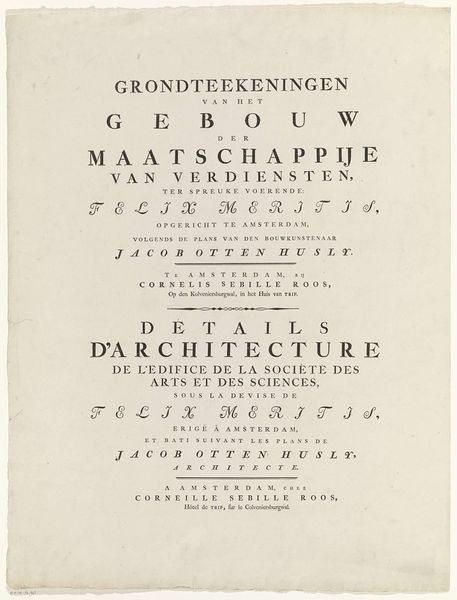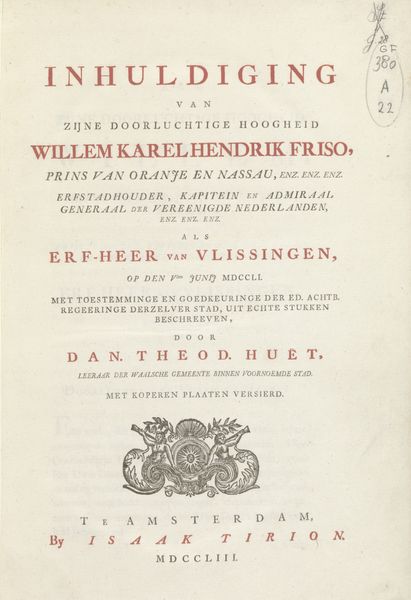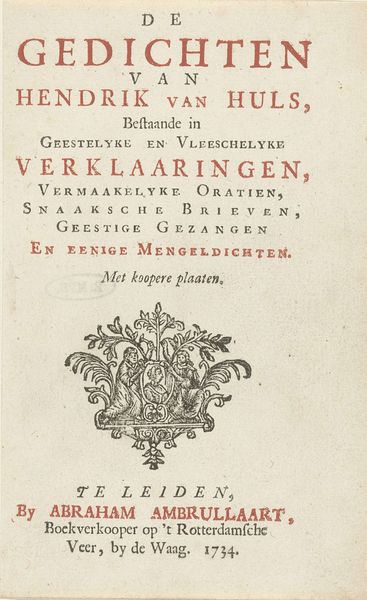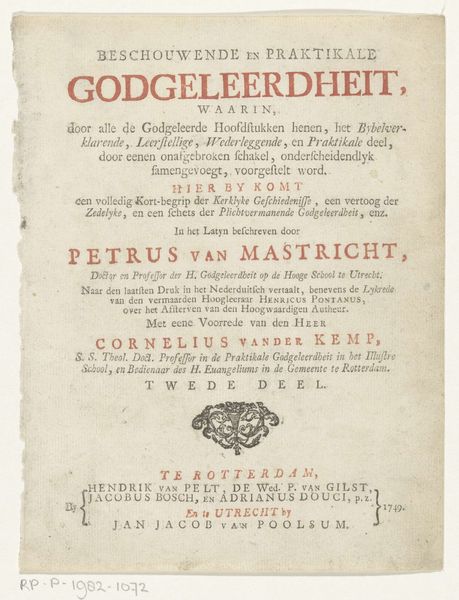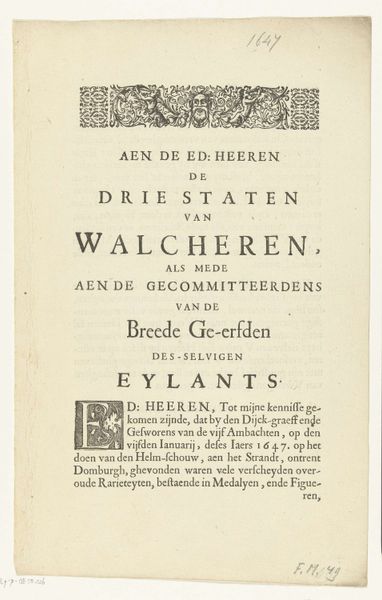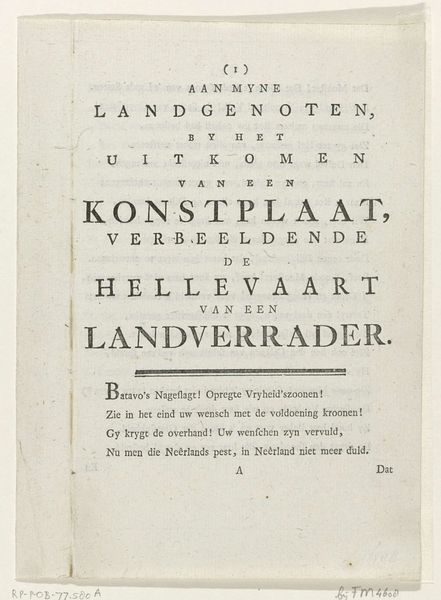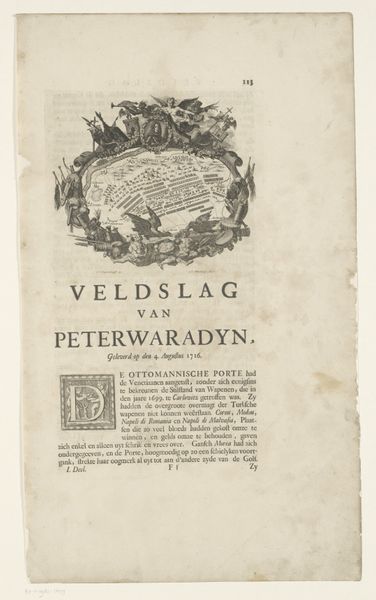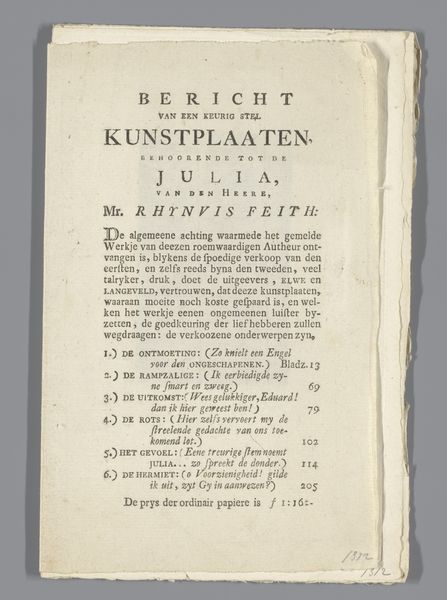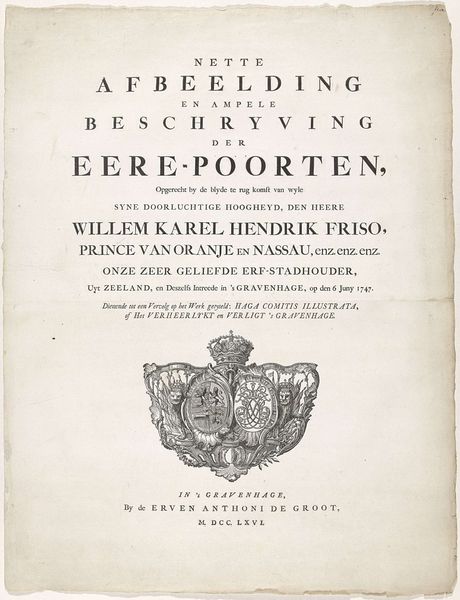
Titelpagina voor: A.G. Eckhardt, Beschryving van een algemeenen graphometer, 1778 1777 - 1778
0:00
0:00
#
script typeface
#
aged paper
#
old engraving style
#
hand drawn type
#
personal sketchbook
#
hand-drawn typeface
#
thick font
#
handwritten font
#
golden font
#
historical font
Dimensions: height 510 mm, width 330 mm
Copyright: Rijks Museum: Open Domain
Curator: Here we have the title page from A.G. Eckhardt’s “Beschryving van een algemeenen graphometer,” dating from 1777-1778. Editor: The texture is incredible—I can almost feel the slight resistance of that aged paper, and smell the ink. It makes me wonder about the engraver’s tools, the kind of press used, the labour involved. Curator: The lettering itself is a testament to a different understanding of information. The elaborate font styles evoke a sense of learnedness. The text serves a dual purpose: it is meant to describe, of course, but also to signify erudition. Editor: Absolutely. The "TEKEN-WERKTUIG" – ‘drawing tool’ – promised within is itself framed by artisanal, handcrafted typography. How many impressions did this press produce? Who purchased these books, and for what purpose? Was it primarily for scholarly use, or was there a burgeoning market for these types of specialized instruments? Curator: That elaborate cartouche below "I. DEEL," what symbols do you see at play? The leaves intertwined might point to notions of nature being mapped or tamed, the overall circularity maybe suggests wholeness or even a sort of encompassing knowledge. Editor: I hadn't thought about the imagery as symbolic; I'm more intrigued by the quality of the impression here – the subtle differences in ink density reveal a little about the press's mechanics, and maybe the printmaker’s technique as they controlled pressure and distribution. These are the things that bring us closer to the processes of creation itself. Curator: I think the intended impact of those tools had ripple effects – cartography changes how people conceptualized territory, power. Editor: You’re right, thinking of this book not just as text but also as commodity – paper, ink, expertise, bound together – helps to see how it circulated within very specific socio-economic channels. Curator: Considering these subtle and intricate symbolic dimensions enhances its narrative. Editor: And dissecting its materiality keeps us grounded in the reality of its making. It really makes one wonder what ever became of this drawing tool.
Comments
No comments
Be the first to comment and join the conversation on the ultimate creative platform.
